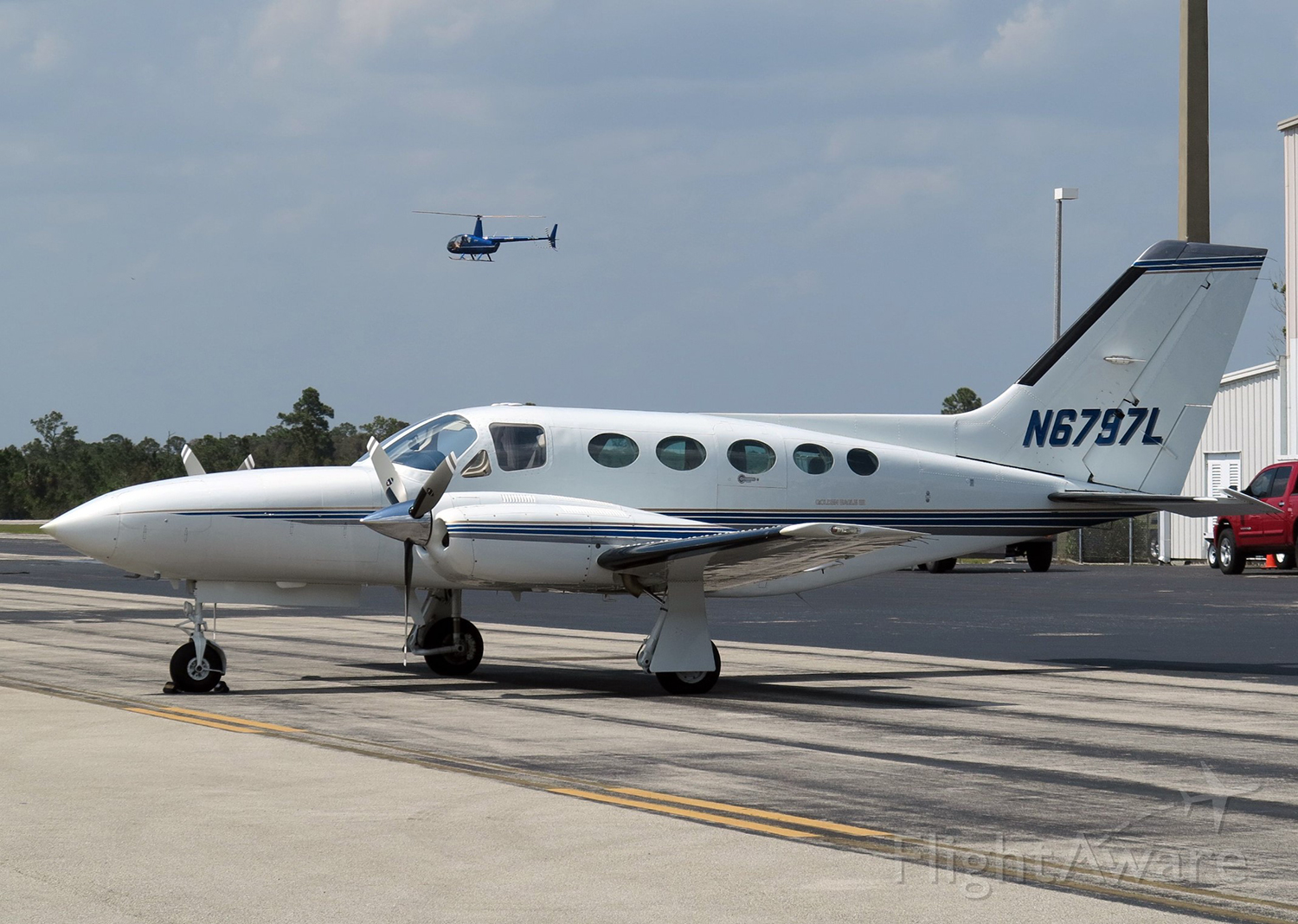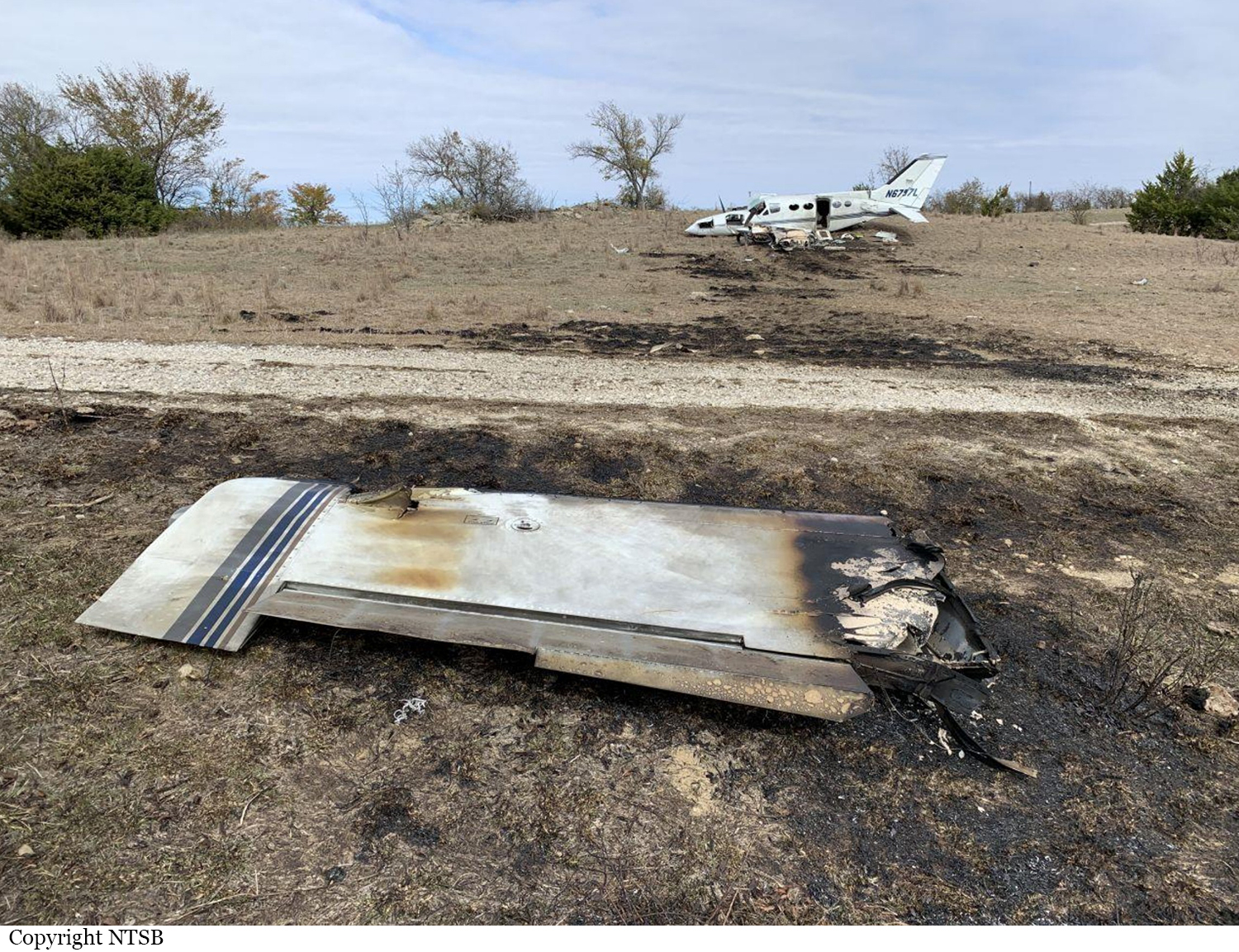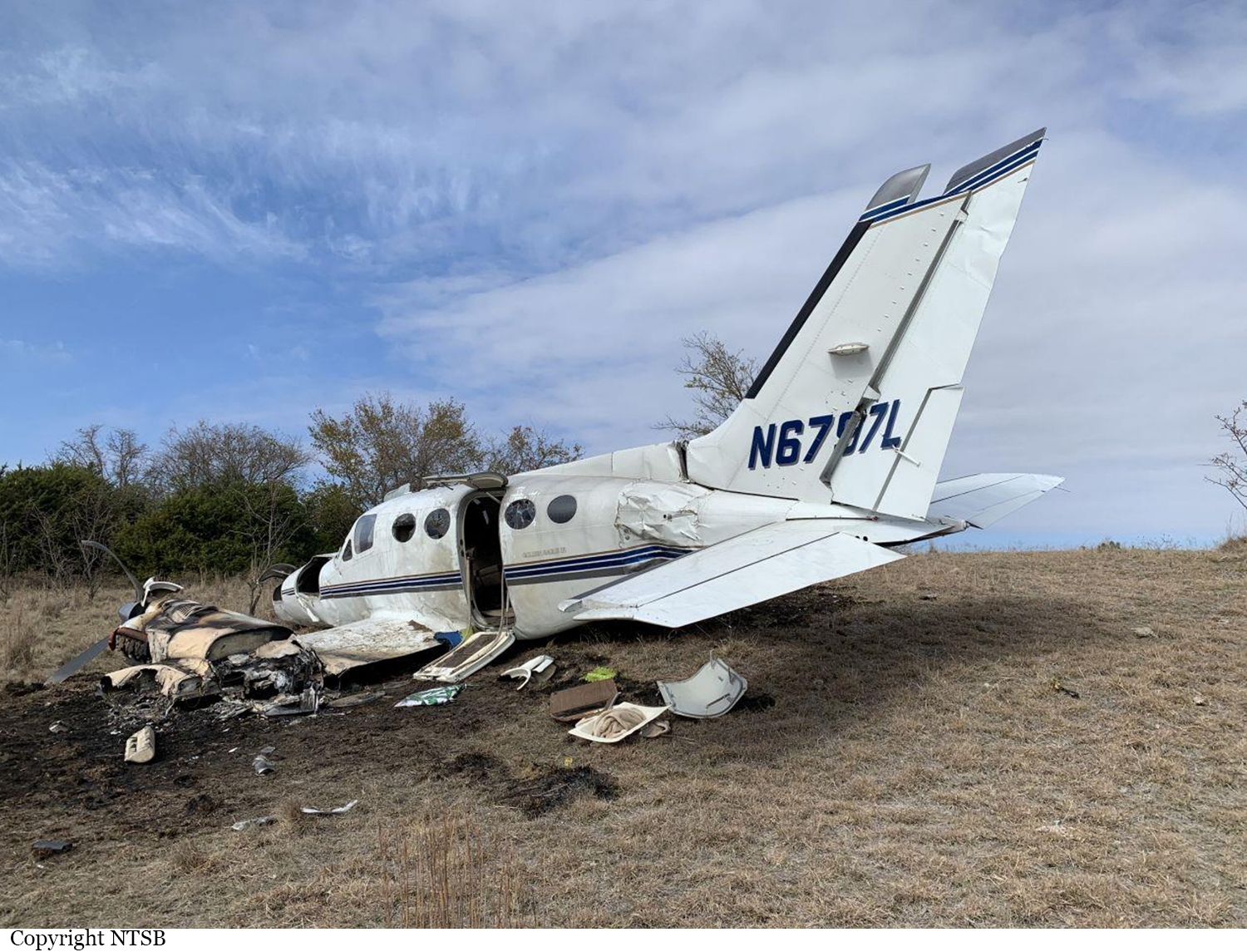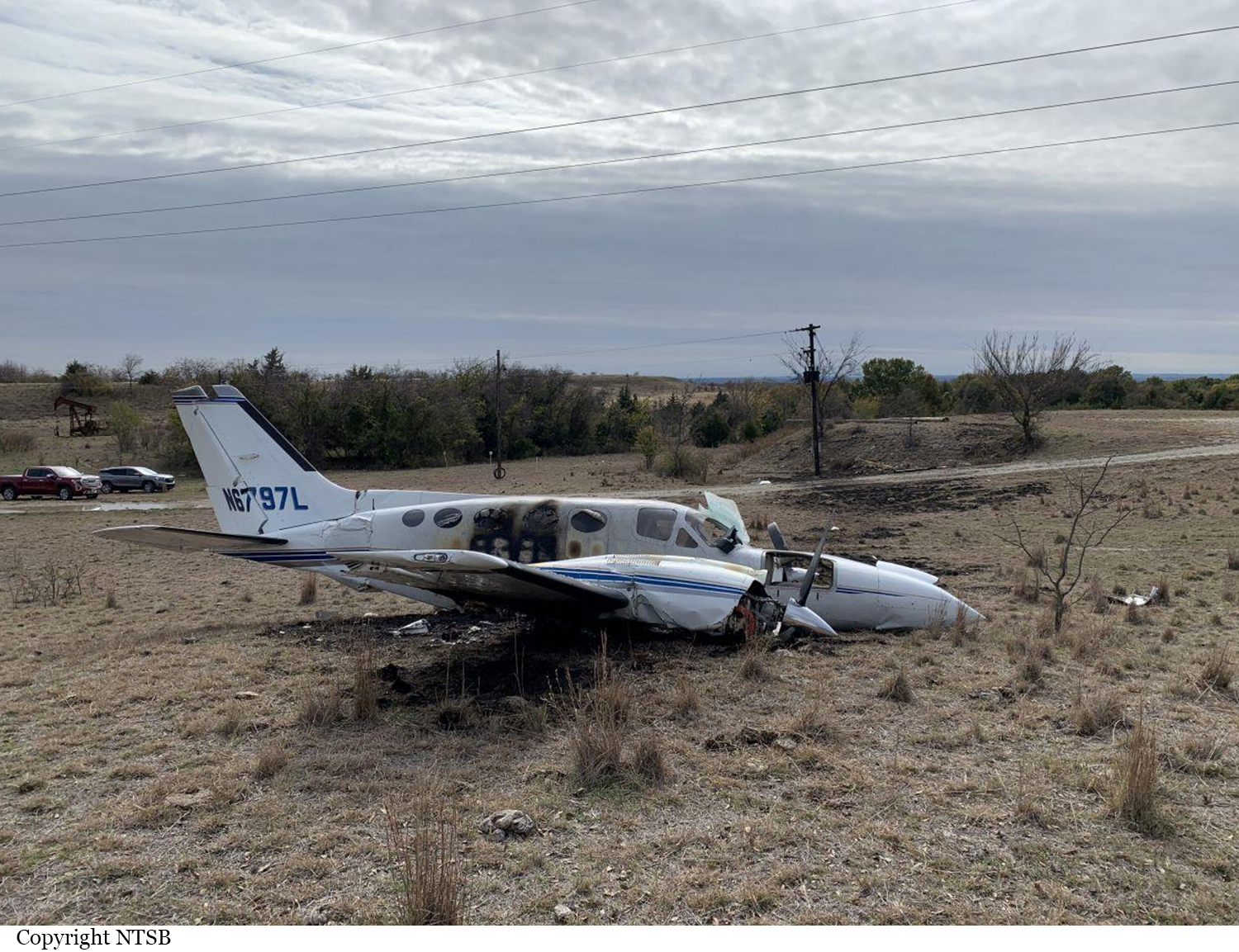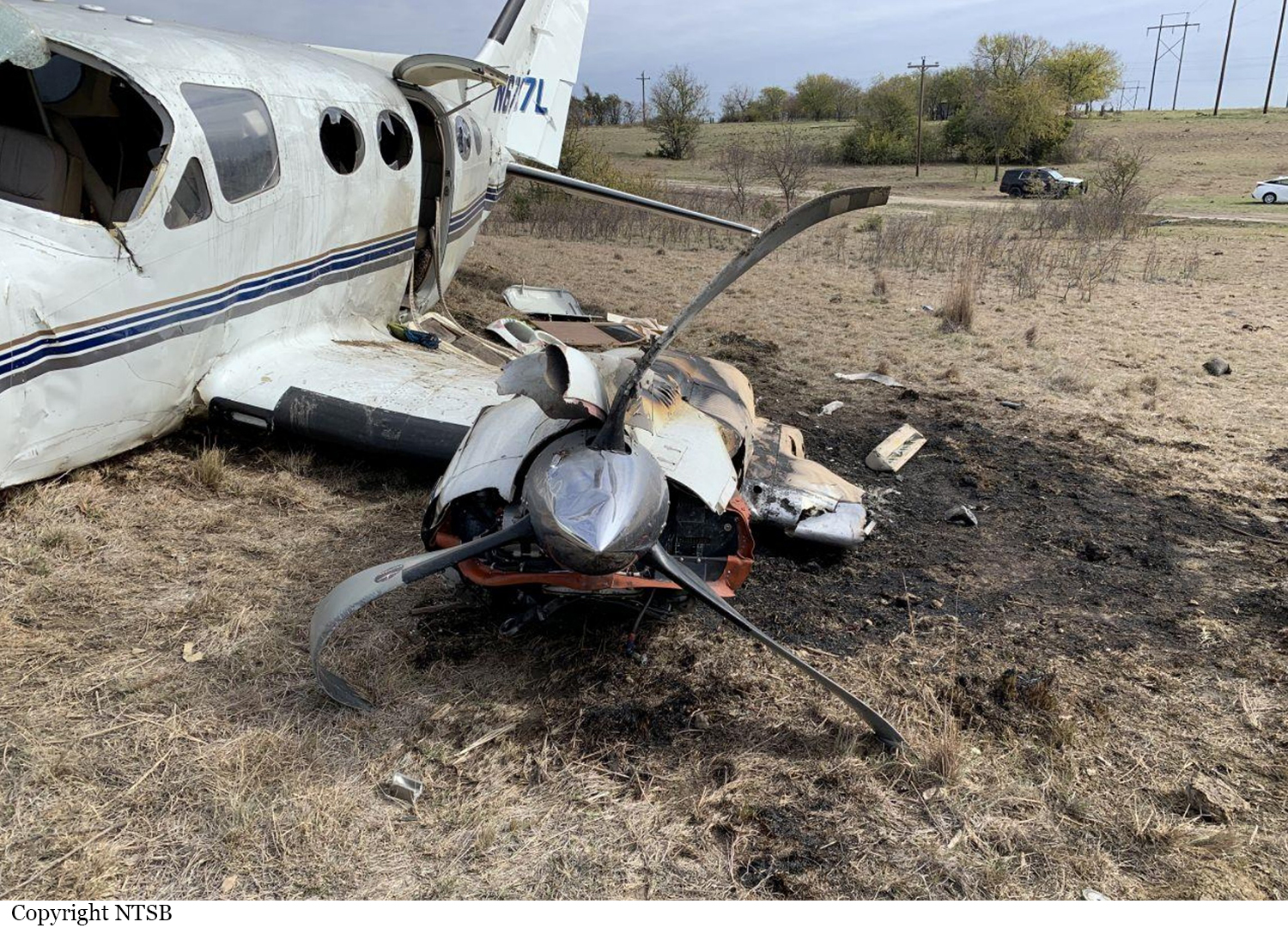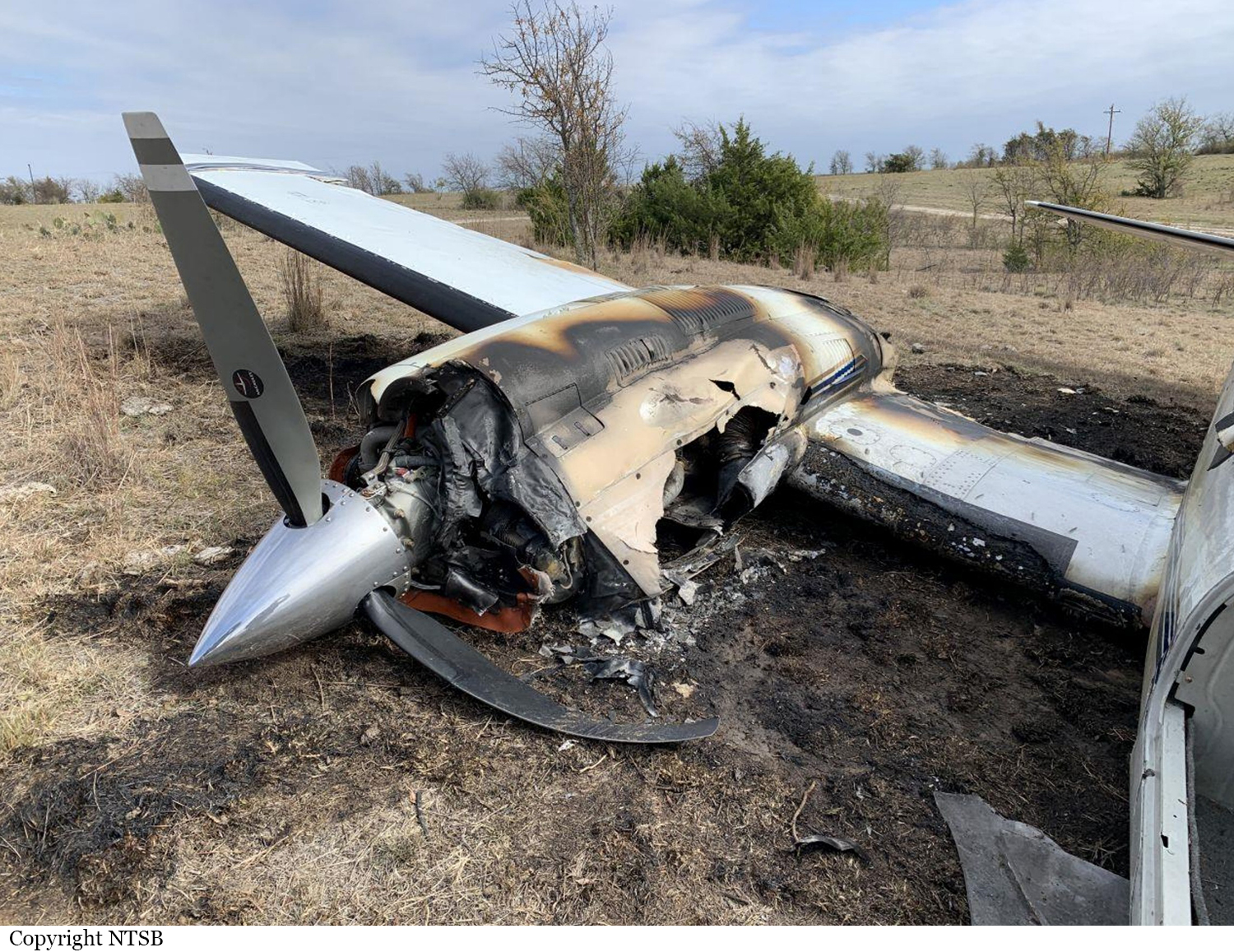Crash of a Cessna 421C Golden Eagle III near Decatur: 1 killed
Date & Time:
Nov 18, 2022 at 1510 LT
Registration:
N6797L
Survivors:
No
Schedule:
Denton – Bridgeport
MSN:
421C-1050
YOM:
1981
Crew on board:
1
Crew fatalities:
Pax on board:
0
Pax fatalities:
Other fatalities:
Total fatalities:
1
Aircraft flight hours:
4805
Circumstances:
After takeoff, the pilot proceeded about 30 miles and climbed to an altitude of about 2,200 ft mean sea level (msl). About 8 minutes after takeoff, the airplane entered a descending left turn that continued until impact. A witness observed a twin-engine airplane at a low altitude and in a descent. After the airplane descended below the tree line, a fireball emerged followed by some smoke; however, the smoke was thin and dissipated quickly. A second witness observed the airplane at a low altitude and in a slow, descending turn. The flight path was steady and the wings “never dipped.” Shortly after the airplane descended out of sight, he observed an explosion. Both engines were on fire when he arrived at the accident site, and there was a fuel leak from the right engine toward the cockpit area. He used a fire extinguisher to keep the fire off the fuselage until first responders arrived. The airplane impacted a utility pole and terrain. Burned vegetation was present over portions of the accident site. The left wing was separated outboard of the engine and was located near the utility pole. A postaccident examination revealed that the left main fuel tank was partially consumed by the postimpact fire; therefore, the amount of fuel in the tank could not be determined. The left engine nacelle was discolored consistent with the postimpact fire. The left nacelle fuel tank appeared intact, and no fuel was visible in the left nacelle fuel tank. However, the amount of fuel in the left nacelle fuel tank at the time of impact could not be determined. The right main fuel tank appeared intact, and about 1 gallon of fuel was drained from the tank during recovery of the airplane. While the postimpact fire was consistent with fuel present onboard the airplane at the time of the accident, the lack of an extensive and sustained ground fire suggested that a limited amount of fuel was present. The left and right engine cockpit fuel selectors were both positioned to the “RIGHT MAIN” fuel tank. The left fuel selector valve, located in the engine nacelle, was in the “OFF” position at the time of the exam. The right fuel selector was in the “RIGHT” fuel tank position. A teardown examination of the left engine did not reveal any anomalies consistent with a preimpact failure or malfunction. A teardown examination of the right engine revealed damage consistent with oil starvation throughout the engine. A teardown examination of the left propeller assembly revealed indications that the blades were at or near the feather pitch stop position during the impact sequence. A teardown examination of the right propeller assembly revealed indications that the blades were on or near the low pitch stop position during the impact sequence. The fuel flow indicator displayed the total fuel remaining as 8.3 gallons when powered up on a test bench. However, the fuel quantity indications are dependent on the pilot properly configuring the device when the airplane is refueled. The fuel flow indicator does not directly provide fuel quantity information. According to the airplane flight manual, the total unusable fuel for the airplane, with one engine nacelle fuel tank installed, was 7.8 gallons. Engine performance data recovered from the onboard engine monitor revealed a reduction in right engine power to near idle power. About 1 minute later, the airplane entered a descending left turn which continued until impact. About 3 minutes after the reduction in right engine power, the left engine completely lost power. Immediately afterward, right engine power increased to near full (takeoff) power. However, about 30 seconds later the right engine completely lost power. The airplane impacted the pole and the terrain a few seconds later. The pilot likely detected an impending failure of the right engine and intentionally reduced power. However, shortly afterward, the left engine lost power due to fuel starvation. At that time, the pilot likely set the left engine to crossfeed from the right main fuel tank to restore power. Unsuccessful, the pilot then decided to feather the left propeller and attempted to use any available power from the right engine, but the right engine immediately lost power as well. Whether the right engine lost power at that moment due to fuel starvation or oil starvation could not be determined. The pilot was obese and had hypertension, high cholesterol, and an enlarged heart with left ventricular thickening. While these cardiovascular conditions placed him at an increased risk for a sudden incapacitating cardiac event, the autopsy did not show any acute or remote myocardial infarction, and the flight path suggests intentional actions until the crash. Thus, the pilot’s cardiovascular disease was not a factor in this accident. Toxicology testing detected the muscle relaxant cyclobenzaprine and its active metabolite norcyclobenzaprine in the pilot’s femoral blood at low therapeutic levels. The sedative-hypnotic medication zolpidem was detected at subtherapeutic levels. While these substances are associated with side effects such as drowsiness and dizziness, the operational findings of this accident do not suggest performance issues related to fatigue. Thus, it is unlikely that the effects from the pilot’s use of cyclobenzaprine and zolpidem were factors in this accident.
Probable cause:
A loss of power on the left engine due to fuel starvation and the subsequent loss of power on the right engine for undetermined reasons.
Final Report:
